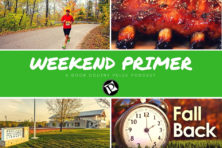The Secret Lives of Animals in Winter
- Share
- Tweet
- Pin
- Share
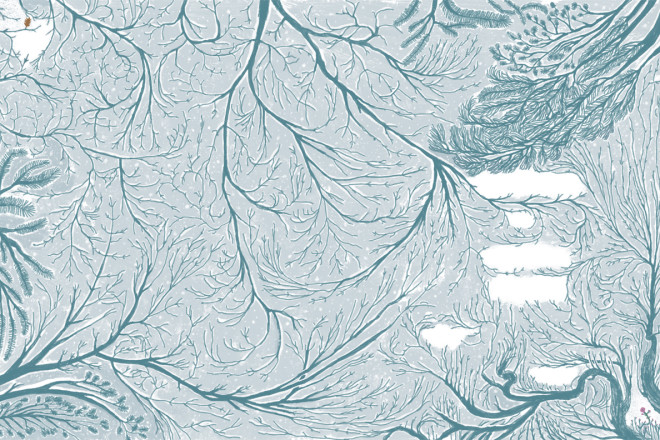
Winter. Love it or hate it, every being needs a strategy to survive it. From the smallest insect to the largest mammal, we are seasonal creatures, hard-wired to detect the subtle cues in our environment that warn us winter is on its way. One morning we’ll notice it’s darker than it used to be when the alarm goes off; the days are getting shorter. Red- and gold-tinged maple leaves have appeared to frame our favorite stretch of Highway 42. A slight shift in the wind at an August picnic makes us sit up and take notice. These signs and others like them presage the tilting of the earth’s axis away from the sun. Winter is coming. Beware. Be prepared.
Sinclair Lewis opined that “winter is not a season, it’s an occupation.” Considering all the work that goes into it, there’s little doubt he’s right. Woodpiles require stacking, storm windows need installing, and winter gear must be unearthed from the back of dark closets to ascertain if last year’s boots still fit and mittens still have their match.
Homo sapiens are not the only ones frantically bidding adieu to the lazy, hazy days of summer; all around us, seen and unseen, members of the animal world are doing the same.
Adapt. Hibernate. Migrate.
As we learned in grade school science classes, animals that live in northern climates enlist three main strategies for winter survival: they adapt (alter their bodies, habitat or lifestyle to tough it out), they hibernate (go into an altered state of dormancy until it’s over), or they migrate (get out of Dodge).
By engaging in a bit of zoomorphism, we can recognize adaptors, hibernators and migrators among our own clan. Uncle Chet grows a beard each November and gleefully waxes his skis. Colleague Janet stocks her tea tin or liquor cabinet, ups her intake of carbs and falls into a down quilt-covered bed with the New York Times’ “Top 100 Classics to Read Before You Die” list. And neighbors Bob and Alice are halfway to Florida by the time Ephraim changes its winter speed limit back to 35 mph.
Every creature finds its own way to make it through the months between the autumnal and vernal equinox. Award-winning author and biologist Bernd Heinrich has spent a good part of his career thinking about this issue. He concludes that we’re all — humans and animals alike — engaged in the same struggle and it’s rather a simple one: “…the problem of surviving winter is…how to keep from freezing and have enough energy left after paying heating costs.”
Following are just a few of the inventive ways animals around us meet the challenge.
Huddling Together for Warmth
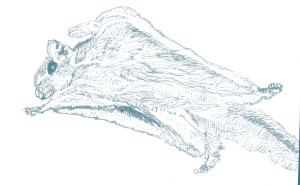
Northern Flying Squirrel
Glaucomys sabrinus
Although flying squirrels may sound like the stuff of myths — like the snipes hunted at Girl Scout camp or the hodags of Rhinelander — these woodland acrobats actually exist and are as active in the winter as they are in the summer. You won’t see them, however, ’til after dark.
The Northern Flying Squirrel is, in reality, a glider. It uses the patagium, a loose flap of skin that stretches from ankle to wrist along each side of its body, to gracefully catapult from tree to tree. Its tail acts as rudder and brake. Those who live near hardwoods can illuminate their birdfeeders, pull up a chair, and see quite a show. With any luck at all, a tiny parachute of fur, roughly nine inches square, will come floating out of the darkness.
Mike Grimm, conservation ecologist with The Nature Conservancy’s Door County office, recalls evenings at the Stratosphere Supper Club in Green Bay as a child. While adults talked, he watched a nighttime circus of flying squirrels glide in to feed on corncobs strategically nailed to the trees outside the club windows.
While the Northern Flying Squirrel’s mode of transportation helps it efficiently collect and store the nuts, seeds, mushrooms and bird eggs it needs to survive the winter, gliding also presents a challenge. Unlike the common gray squirrel, the Northern Flying Squirrel cannot build up winter fat; it must remain lean and fit all winter long.
Without a layer of fat, how does it stay warm? As soon as the temperature drops, friends and family gather together in a communal nest. The further north a squirrel lives, the greater the size of its winter household. Lumberjacks tell of felling den trees and watching an estimated 50 individual squirrels scurry for new shelter.
Clothes Make the Man…and the Ermine
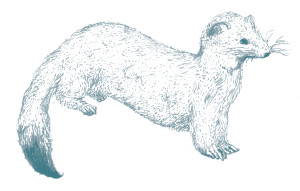
Ermine
Mustela erminea
When wearing its brown fur coat in spring, summer and fall, the forest’s smallest, ferocious carnivore is a weasel or stoat. Come the beginning of November, however, when it swaps out its wardrobe for all white, it becomes the ermine. The ermine’s white fur (long coveted as an adornment for kings and queens) is the perfect choice for winter. Not only does it help the ermine sneak up on prey, it also helps it hide from predators. A black dot on the tip of its tail and its black nose help confuse and frustrate the red fox, coyotes, owls and hawks that hunt it.
The ermine is a member of the mustelids, a family that includes skunk, mink and fishers. Mustela translates to “one who carries off mice.” Mice and voles are an abundant winter food source and the ermine is adept at hunting them in the tunnels they dig in the snow. With sharp front teeth designed to pierce the brains of animals many times its size, the ermine will also attack rabbits, another plentiful source of winter food.
A Whistle Pig by Any Other Name
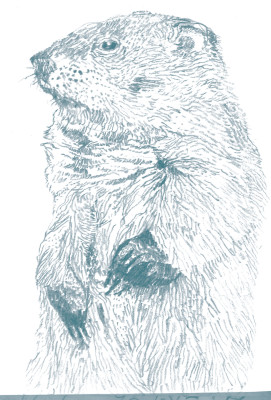
Woodchuck
Marmota monax
Woodchucks — also known as groundhogs, marmots and whistle pigs — are hibernators who survive the winter by building up an impressive supply of fat. In late summer and early fall, these vegetarians become obsessed with eating and may consume a third of their body weight each day. They turn the excess calories into fat cells — both white for insulation and brown for body heat production.
When the time comes for them to retire to their elaborately and expertly engineered burrows, they literally drag their bellies on the ground to do so. Once ensconced in their labyrinth, they seal the entrance with dirt and begin to live off their fat reserves. To make these reserves last through their long winter nap, their breathing rate drops from 2,100 to 10 breaths per hour and their heart rate drops from 80 beats per minute to just four or five. Researchers believe that the woodchuck and other hibernators awake briefly and occasionally to exhale the toxins that build up in their systems while they’re dormant. Although the world expects an appearance from groundhogs on February 2nd, they won’t typically emerge until a reliable food supply is available to support spring mating.
As Cozy as a Frog in a Log
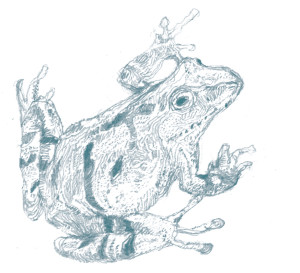
Northern Spring Peeper
Pseudacris crucifer
Spring peepers are a welcome sign of spring in Door County. While we marvel at the voluminous cacophony of their mating calls, we should also marvel at how these small frogs have just spent the winter — frozen solid!
Northern spring peepers, like other amphibians, are ectothermic; their internal body temperature is regulated by the external environment. In late fall, they tuck themselves into leaf litter or log crevices and begin a process that sounds almost folkloric. The moment a huddling frog is touched by just one ice crystal, its body turns to ice. Its heart stops beating for days or even weeks, it stops breathing, and its kidneys shut down. According to some naturalists, holding a frog in this state is like holding a rock.
Strange Bedfellows
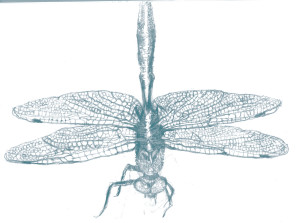
Hine’s Emerald Dragonfly
Somatochlora hineana
The Hine’s Emerald Dragonfly, once thought to be extinct, gets a lot of well-deserved attention in Door County. This small insect is responsible for attracting research and ecological restoration monies to groups like the Nature Conservancy, The Ridges Sanctuary, Crossroads at Big Creek, and the Door County Land Trust. That’s because the Hine’s Emerald Dragonfly can only exist in a very specialized microclimate — i.e. spring or seep-fed streamlets just a few centimeters deep that are clean and cool and dry for part of each year. These shallow streamlets must be underlain by limestone bedrock (dolomite).
Hine’s Emerald Dragonflies, with their emerald green eyes, live two to four years in the larval stage and must, therefore, find a way to overwinter. When the water they live in begins to freeze, they do something that appears counterintuitive; they crawl into tunnels left by burrowing crayfish, a predator, and hibernate. The colder it gets, the deeper they go.
Coggin Heeringa, naturalist and director of Crossroads at Big Creek in Sturgeon Bay, says, “Imagine crawling into bed and falling asleep next to one of your arch enemies!” Scientists are not sure how the larvae avoid being eaten by the emerging crayfish in spring, but, thankfully, at least some of them do.
The Return of the Native
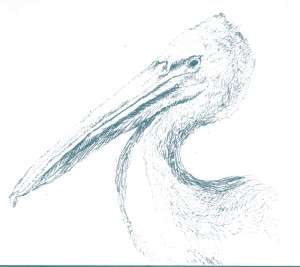
American White Pelican
Pelecanus erythrorhynchos
When the American White Pelican, with its unmistakable prehistoric profile and nine-foot wingspan, appeared in the skies of Wisconsin a decade or so ago, it was an anomaly. A breeding colony had been known to exist in the 1880s (on Pelican Lake in Oneida County), but the pelican had been absent from Wisconsin for more than 100 years. Naturalists attribute its disappearance to a combination of human factors — hunting, insecticide use and loss of habitat. According to Department of Natural Resources wildlife biologist Jeff Pritzl, the fact that they’re back is “an ecological success story.”
American White Pelicans are highly social birds that live in colonies with hundreds and even thousands of nesting pairs. They help each other fish for the three to four pounds they eat per day, herding small, mostly non-commercially valued fish into pools near shore. These ponderous creatures with their black-tipped wings and ballet-like thermal surfing moves provide one of the pleasures of summer. Come fall, however, they leave us behind and begin their annual migration south to open waters along the Gulf Coast and Pacific Coasts. By the time our lakes and rivers freeze, they’re delighting wildlife lovers elsewhere.
Quick Glimpses into the Winter World of Wisconsin Wildlife
- Ruffed Grouse tunnel into the snow to wait out a bad winter storm. When they emerge, they use fleshy nubs that grow on their toes in winter the same way we use snowshoes.
- Snowfleas, which aren’t fleas at all but insects called springtails, become active on warm winter days. If it looks like a giant pepper shaker emptied itself in your yard, take another look and you’ll see the pepper specks move!
- Raccoons do their mating in the dead of winter, with the polygamous male visiting multiple monogamous females.
- White-tailed Deer and other hoofed animals have a hard time moving in deep snow and restrict their movement to small, packed-down areas called “yards.”
- Opossums do not hibernate. A bit out of their natural range in Wisconsin, they will sometimes lose the tips of their tails and ears to frostbite.
- Red-headed Woodpeckers revisit crevices in old barns and fence posts to find the bugs they tucked away months before.
Sources
America’s Favorite Backyard Wildlife, Kit and George Harrison. New York, New York: Simon and Schuster, 1985.
Mammals of the Great Lakes Region, Allen Kurta. Ann Arbor, Michigan: The University of Michigan Press, 1995.
Winter World: The Ingenuity of Animal Survival, Bernd Heinrich. New York, New York: HarperCollins Publishers, 2003.
Wit & Wisdom of the Great Outdoors, Jerry Wilber. Duluth, Minnesota: Pfeifer-Hamilton Publishers, 1993.
Woodchucks: Their Ecology and Control, Scott Craven and Stuart Keith. Madison, Wisconsin: University of Wisconsin System Board of Regents, 1996.
Illustrations by Ryan Miller.

